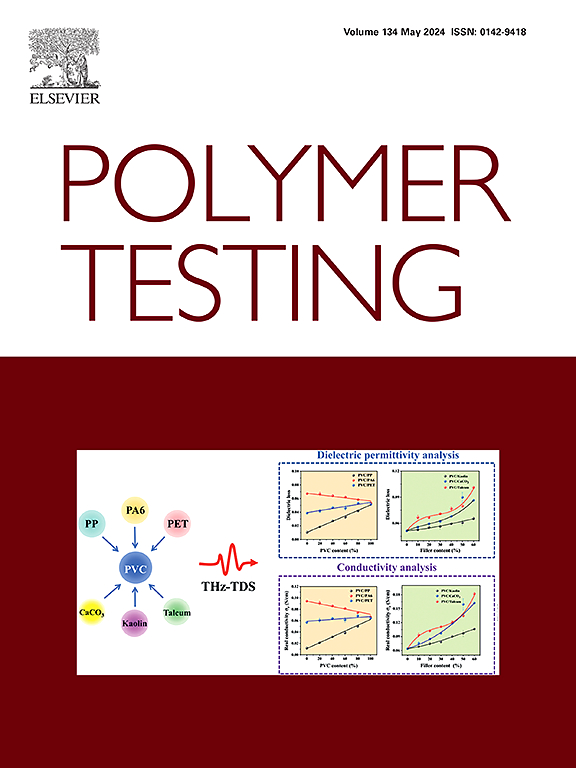Smart hydrogels for sensing and biosensing – Preparation, smart behaviours, and emerging applications – A comprehensive review
IF 6
2区 材料科学
Q1 MATERIALS SCIENCE, CHARACTERIZATION & TESTING
引用次数: 0
Abstract
Hydrogels are three dimensional (3D) crosslinked hydrophilic polymer network structures with an excellent stimulus sensitivity. 3D networks of hydrogels can absorb high amount of water in their crosslinked structures. In the last few decades hydrogels are successfully gaining attention in tremendous applications by their nature, texture, smart behaviour and a number of developments are taking chance in the field of sensing and bio-sensing applications. Owing to their highly tunable swelling, self-healing, mechanical, porous-structure and conductive properties, the research has been advancing day-by-day in the field of hydrogels and their applications. Hydrogels are soft materials whch are prepared through physical or chemical crosslinking methods weak van der Waals forces, ionic bonds or covalent bonds. A successive progress and recent advancement in hydrogels from simple network to complex double network structure to development of smart hydrogels which is now a trending research area in this field. The versatility and ability of smart materials to responds to various external stimuli make them ideal for detecting and quantifying wide range of analytes. This review widely discusses hydrogel preparation techniques including self-assembly, ionic interaction, freeze-thawing, graft-copolymerization, chemical, electrochemical, radiation, template polymerization, photo crosslinking and by simple chemical interaction. This review also focusses on various types of hydrogel sensors such as, fluorescent, colorimetric, electrochemical, electrochemiluminescence, surface-enhanced Raman scattering along with their sensing mechanisms. In addition, the visco-elastic behaviour empowering the hydrogels to design 3D, 4D printable structures using additive manufacturing techniques for better sensing applications were discussed. Moreover, the review discusses the behaviour of multifunctional hydrogel composites incorporated with carbon-based nanomaterials, metal-oxides and novel 2D materials likeMXene for the development of flexible, and wearable sensors. The review also highlights the physico-chemical and bio-chemical stimuli sensitive mechanisms in response to external smart stimuli for today's cutting-edge applications in sensing and bio-sensing.

传感和生物传感用智能水凝胶-制备,智能行为和新兴应用-综合综述
水凝胶是三维(3D)交联的亲水性聚合物网络结构,具有优异的刺激敏感性。水凝胶的三维网络可以在其交联结构中吸收大量的水。在过去的几十年里,水凝胶因其性质,质地,智能行为以及在传感和生物传感应用领域的许多发展而成功地获得了广泛的应用。由于水凝胶具有高度可调的膨胀、自愈、机械、多孔结构和导电性能,在水凝胶及其应用领域的研究日益深入。水凝胶是通过物理或化学交联方法制备的软材料,具有弱范德华力、离子键或共价键。水凝胶从简单的网状结构到复杂的双网状结构,再到智能水凝胶的发展,是目前该领域的一个研究热点。智能材料的多功能性和响应各种外部刺激的能力使它们成为检测和定量广泛分析物的理想选择。本文综述了水凝胶的制备技术,包括自组装、离子相互作用、冻融、接枝共聚、化学、电化学、辐射、模板聚合、光交联和简单化学相互作用。综述了各种类型的水凝胶传感器,如荧光、比色、电化学、电化学发光、表面增强拉曼散射等及其传感机理。此外,还讨论了水凝胶的粘弹性特性,使其能够利用增材制造技术设计3D、4D可打印结构,以实现更好的传感应用。此外,本文还讨论了多功能水凝胶复合材料与碳基纳米材料、金属氧化物和新型2D材料(如emxene)的行为,用于开发柔性和可穿戴传感器。综述了物理化学刺激和生物化学刺激对外界智能刺激的敏感机制在当今传感和生物传感领域的前沿应用。
本文章由计算机程序翻译,如有差异,请以英文原文为准。
求助全文
约1分钟内获得全文
求助全文
来源期刊

Polymer Testing
工程技术-材料科学:表征与测试
CiteScore
10.70
自引率
5.90%
发文量
328
审稿时长
44 days
期刊介绍:
Polymer Testing focuses on the testing, analysis and characterization of polymer materials, including both synthetic and natural or biobased polymers. Novel testing methods and the testing of novel polymeric materials in bulk, solution and dispersion is covered. In addition, we welcome the submission of the testing of polymeric materials for a wide range of applications and industrial products as well as nanoscale characterization.
The scope includes but is not limited to the following main topics:
Novel testing methods and Chemical analysis
• mechanical, thermal, electrical, chemical, imaging, spectroscopy, scattering and rheology
Physical properties and behaviour of novel polymer systems
• nanoscale properties, morphology, transport properties
Degradation and recycling of polymeric materials when combined with novel testing or characterization methods
• degradation, biodegradation, ageing and fire retardancy
Modelling and Simulation work will be only considered when it is linked to new or previously published experimental results.
 求助内容:
求助内容: 应助结果提醒方式:
应助结果提醒方式:


